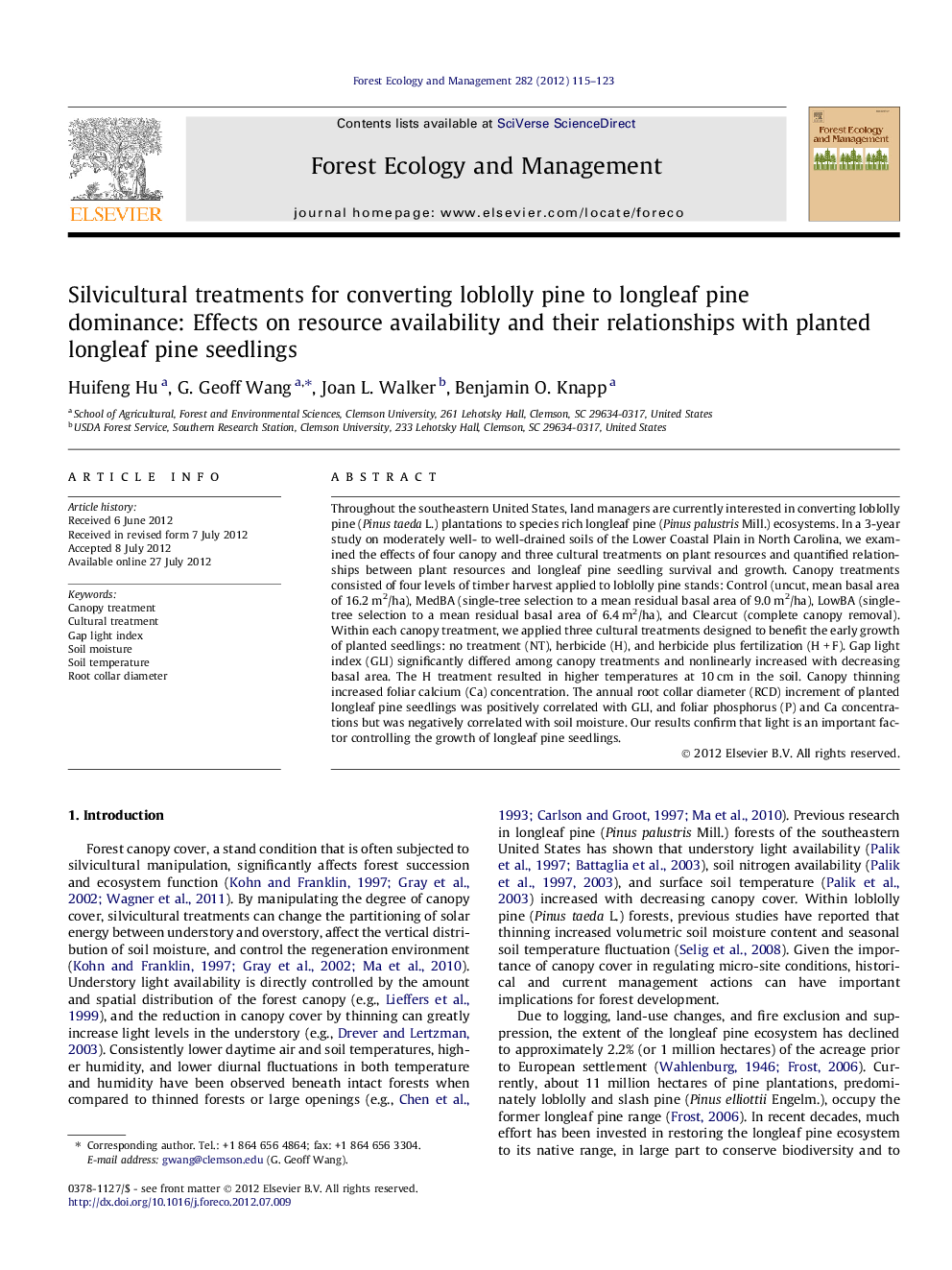| کد مقاله | کد نشریه | سال انتشار | مقاله انگلیسی | نسخه تمام متن |
|---|---|---|---|---|
| 87425 | 159250 | 2012 | 9 صفحه PDF | دانلود رایگان |

Throughout the southeastern United States, land managers are currently interested in converting loblolly pine (Pinus taeda L.) plantations to species rich longleaf pine (Pinus palustris Mill.) ecosystems. In a 3-year study on moderately well- to well-drained soils of the Lower Coastal Plain in North Carolina, we examined the effects of four canopy and three cultural treatments on plant resources and quantified relationships between plant resources and longleaf pine seedling survival and growth. Canopy treatments consisted of four levels of timber harvest applied to loblolly pine stands: Control (uncut, mean basal area of 16.2 m2/ha), MedBA (single-tree selection to a mean residual basal area of 9.0 m2/ha), LowBA (single-tree selection to a mean residual basal area of 6.4 m2/ha), and Clearcut (complete canopy removal). Within each canopy treatment, we applied three cultural treatments designed to benefit the early growth of planted seedlings: no treatment (NT), herbicide (H), and herbicide plus fertilization (H + F). Gap light index (GLI) significantly differed among canopy treatments and nonlinearly increased with decreasing basal area. The H treatment resulted in higher temperatures at 10 cm in the soil. Canopy thinning increased foliar calcium (Ca) concentration. The annual root collar diameter (RCD) increment of planted longleaf pine seedlings was positively correlated with GLI, and foliar phosphorus (P) and Ca concentrations but was negatively correlated with soil moisture. Our results confirm that light is an important factor controlling the growth of longleaf pine seedlings.
► Canopy treatments significantly affected gap light index (GLI) and foliar Ca concentration.
► The herbicide treatment resulted in higher soil temperature.
► Seedling growth positively correlated with GLI, foliar P and Ca concentrations.
Journal: Forest Ecology and Management - Volume 282, 15 October 2012, Pages 115–123